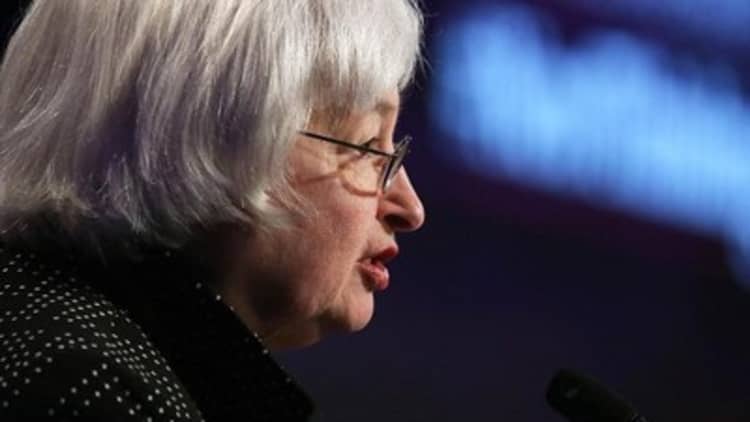


Conditions for a rate increase are "approaching" though not at hand, according to the minutes from the most recent Federal Reserve meeting.
Policymakers at the U.S. central bank's Open Market Committee said at the July session that conditions hadn't been achieved yet for the first interest rate increase in nearly 10 years, due primarily to inflation that is not yet moving toward the necessary conditions.
"Most judged that the conditions for policy firming had not yet been achieved, but they noted that conditions were approaching that point. Participants observed that the labor market had improved notably since early this year, but many saw scope for some further improvement," the minutes said.
Discussion included both wariness over the pace of inflation as well as a "small" downward revision in medium-term gross domestic product growth.
The minutes appeared to be released on Bloomberg terminals earlier than their usual 2 pm time for reasons not immediately clear, and did not hit the Fed's web site until about 1:45. In a statement to CNBC, Bloomberg said, "In the process of preparing embargoed material we inadvertently sent a headline ahead of the embargo."
Read More Fed may have just gotten a red light for rate hike
After being sharply lower earlier, stocks rallied quickly after the premature release while bond yields hit session lows.
"It's a little bit of a puzzling reaction. Certainly they didn't take (a rate hike) off the table," said Richard Clarida, global strategic advisor at Pimco. "You'd have to infer maybe the markets were looking for something in neon, ' yes we are going to hike.'"
The Fed has set a 2 percent inflation rate as one of the earmarks for a rate increase, which has not been breached, along with a 6 percent unemployment rate that, conversely, has long since been eclipsed.
"You can make the case that core inflation is running at an uphill level. But headline inflation is depressed and the rest of the world is not doing very well in terms of growth and is awash in excess capacity," said Robert Tipp, chief investment strategist at Prudential Fixed Income. "In this global setting...you'd almost think the Fed would be more worried about fostering growth and inflation."
Read More Chair Yellen, please take your victory lap!
The FOMC declined to raise rates at the July meeting. CME traders had been assigning a 46 percent probability of a rate hike in September. RBS said futures pricing after the minutes release cut that probability to 36 percent, with the higher likelihood now coming in January.
"Many participants indicated that their outlook for sustained economic growth and further improvement in labor markets was key in supporting their expectation that inflation would move up to the Committee's 2 percent objective, and that they would be looking for evidence that the economic outlook was evolving as they anticipated," the minutes said.
"However, some participants expressed the view that the incoming information had not yet provided grounds for reasonable confidence that inflation would move back to 2 percent over the medium term and that the inflation outlook thus might not soon meet one of the conditions established by the Committee for initiating a firming of policy."
The Fed last raised rates more than nine years and has kept the key funds rate near zero since a series of moves to stem the financial crisis in late 2008. In addition to zero rates, the Fed expanded its balance sheet by more than $3.5 trillion, to $4.5 trillion, in three rounds of bond purchases called quantitative easing.
The minutes indicated a fairly spirited debate between hawks, or those in favor of raising rates, and doves, who prefer the Fed's historically easy monetary policy.
The doves believe that the economy hasn't yet reached the point where it's ready for liftoff, while the hawks worry, among other things, that inflation could quickly get out of hand, and the Fed will be left without tools to combat the next downturn if it maintains zero rates.
"If not now, when?" said Robin Anderson, senior economist at Principal Global Investors. "Maybe next year or even the following year, at some point we're going to be at risk for a recession. The Fed wants to be able to have room to able to move rates back down in subsequent years. That's why they want to move away from the zero bound and the imbalances it creates."


